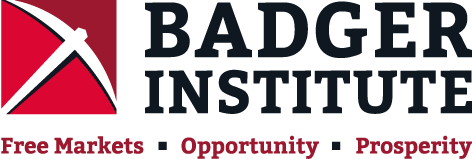- Home
- Issues
- Mandate for Madison
- Research
- News & Analysis
- Media
- Events
- About
- Top Picks
- Donate
- Contact Us
Subscribe to Top Picks
Get the latest news and research from Badger Institute
- Federal prosecutors in Madison have stopped prosecuting cannabis offenses
- Derail the Hop permanently
- Wisconsin cities can grow if they let housing markets work, say scholars
- Half of Wisconsin state employees may be working from home — though no one has a complete count
- Troubled Milwaukee streetcar remains 30% under pre-pandemic peak despite new tracks
- AEI: Building more homes in Wisconsin would drive down cost
- Kinser DPI victory would alter decades-long trend
- Where Wisconsin’s crazy meth infestation appears most prevalent
Browsing: Education
The law does not allow Wisconsin to give anyone a free ride based on racial identity such as being Native American. So instead, UW-Madison is basing the cost waiver on membership in one of 11 federally recognized Wisconsin tribes.
The news of a $100 million investment in a new school on metro Milwaukee’s north side by St. Augustine Preparatory Academy, a school participating in Wisconsin’s pioneering school choice program, puts a number on a development predicted last summer.
For too long to remember, MPS has been mired in mediocrity, unable to move forward on anything with any sort of urgency. There’s abundant evidence that more money will not produce better outcomes, but even more evidence that MPS typically moves slightly slower than the speed of your average hermit crab race.
Two state Assembly members have proposed giving a $25 starter for a state-administered educational savings account to every child born or adopted in Wisconsin.
Wisconsin’s largest school district is planning to ask its voters to approve a $252 million annual increase in its revenue — and, consequently, spending — in an upcoming referendum. That district, Milwaukee Public Schools, has seen a sharp increase in spending in the two most recent years of state data after nearly a decade of spending that mostly kept up with but did not exceed inflation.
A new bill in Madison could, if enacted, result in substantial property tax cuts in many school districts. It would also result in significantly higher state aid for many traditional public school districts where large numbers of children choose to attend independent charter schools or private schools in one of Wisconsin’s parental choice programs.
To bring about change, parents need to know what a school is teaching. They also need the leverage to object. School choice is not the only tool, but it is a necessary first tool, because parents’ power to change schools comes from their power to leave schools for better ones.
Over 70,000 Wisconsin students could be impacted If successful, a lawsuit claiming Wisconsin’s private-school parental choice program and public independent…
In the lawsuit bankrolled by the Minocqua beer marketer, Kirk Bangstad, who’s trying to kill school choice in Wisconsin, his lawyers make an icy admission: They know it will “impact tens of thousands of children” to throw them out of their schools. They’re asking the state Supreme Court to hurt those kids anyway.
More than 5,000 students with disabilities participate in one of four Wisconsin school choice programs. In 2022 alone, more than 150 schools in the state’s choice programs accepted 2,217 students with special needs scholarships.
Saying they “have not given up on a colorblind society,” Wisconsin Republicans have filed a bill to remove race-based considerations from an array of UW System and technical college financial aid programs.
Since 2009, Wisconsin district school enrollment is down 8.3%, or 72,032 students. Independent charter school enrollment is up 81%, or 5,185 students. Choice school enrollment is up 163%, or 34,021 students.
Parents have changed America’s mind on education, parents who correctly see their children’s futures as more important than some abstract idea about there being one proper shape for schooling.
Wisconsin’s Forward Exam, used since 2015-16, tests all students in grades 3 through 8 on reading and math every year, though the 2019-20 school year was skipped.
Students’ performance is ranked as “advanced,” “proficient,” “basic” or “below basic.”
Wisconsin’s independent choice and public charter schools have drawn about 70,000 children, two-thirds of them non-white, and the programs are old enough to have piled up an undeniable record of better outcomes. Why do so many speakers in the DPI’s equity series oppose this?
As part of a training program, an initiative of the Wisconsin Department of Public Instruction is bringing in high-profile left-wing speakers, including Ibram X. Kendi and Robin DiAngelo, to speak to potentially thousands of Wisconsin teachers about “educational equity.”
Now that choice and independent charter schools are going to be less disadvantaged compared to district schools and to the prevailing cost of educating a kid, donors’ investments can go toward expanding capacity.
Examine your monthly cash flow and discretionary spending to prepare for new monthly loan expense. According to a report by Wells Fargo, the typical student loan repayment will be between $210 and $314 per month. It’s time to determine where that money will come from.
Pushing back on a Gov. Tony Evers veto protecting the University of Wisconsin System’s extensive diversity, equity and inclusion infrastructure, Assembly Speaker Robin Vos is asking for legislative committee approval to again remove $32 million from the system’s budget unless it dismantles its DEI programs.
Wisconsinites clearly got some wins in the 2023-2025 biennel budget. Now the task at hand is consolidate and expand those moving forward.




